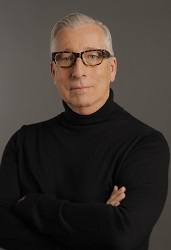TELLIER, A/Prof Pierre-Paul
Co-convenor SIG Adolescent &Young Adult Care
 Pierre-Paul Tellier MD, is associate professor in Family Medicine at McGill University, in Montreal. He is co-chair of the new WONCA Special Interest Group (SIG) on Adolescent and Young Adult Care.
Pierre-Paul Tellier MD, is associate professor in Family Medicine at McGill University, in Montreal. He is co-chair of the new WONCA Special Interest Group (SIG) on Adolescent and Young Adult Care.
Good day to everyone reading this. I was asked to be a featured WONCA doctor, so you may become more familiar with our new SIG on Adolescent and Young Adult Care.
How did you come to have a passion for adolescent health?
If you read my short bio on
our SIG website you will see that I did a Fellowship in Adolescent Health in New York. This was an exciting two years of my life. I did all sort of things including taking modern ballet dance, challenging as I don’t know my left from my right, with a teacher who had danced with Martha Graham. The studio was located on Broadway opposite the theater where Katherine Hepburn played the lead in “The West Side Waltz”. The unexpected result being that I improved my posture, which helped my chronic back pain, and since then I have been able to say that I danced on Broadway.
When I returned to Montreal I worked in a family medicine teaching practice and other clinics which offered services to young people. Eventually I became Director of Student Health Services at McGill University, common job for family physician interested in adolescent/young adult health.
I saw patients, did some administration, and developed a health promotion program which included setting up the “Shag Shop”. This was the first condom store located in a university-based clinic in Canada. It wasn’t just a condom store. We sold a variety of items that young people could use such as diaphragms, lubricants, menstrual cups and thermometers, few students had one of these, so we thought it would be useful to provide them on site. The students, who worked in the shop, were trained as peer educators and provided safer sex information to the unsuspecting student who came in. Then, I became Dr T and started answering questions submitted online by students. Eventually, the powers that be demanded that I become a full-time administrator, something I didn’t want to do. I decided to retire.
However, as a friend said, I failed at retirement. I returned to a teaching practice located within a government run community center. In this setting I see patients from a variety of ethnic backgrounds, including many young people seeking asylum because they are GLBT. I also continue to work, two evenings a week, in a grassroot community center which offers services to youth between the ages of 14 to 25, including many who are defined as “at risk” and who are seen at no cost to them. This has garnered me the Citizen of the Year award from Centraide Montreal, also known as the United Way and more recently the Sovereign’s medal for Volunteers. While trophies and medals are nice, more rewarding for me is seeing the smile on the face of the young person who has been listened to and offered services with respect.
Other interesting things you have done?
I also volunteer on the Foundation for Advancing Family Medicine of the College of Family Medicine of Canada, chair the GLBT committee for the Society for Adolescent Health and Medicine and I just finished being a guest editor for a special edition of the Clinical Child Psychology and Psychiatry journal on the care of gender diverse children, adolescent and young adults. I also do research, why not? Current research interests include, Family Medicine identity development, medical student empathy and HPV epidemiology.
Oh, I am also the vice president of the Board of Director of the Rozynski Arts Centre. We have been working at trying to revive a pottery and ceramic school in the small hamlet of Ways Mills, in Canada. As a result, I have started to take pottery classes. I am as successful at this as I was at modern ballet. However, a piece I donated for a silent auction to raise funds for the Section of Teachers of the College of Family Medicine of Canada was sold for $65 Canadian Dollars at the Family Medicine Forum last year.
So, why establish a SIG in Adolescent Health?
Primarily because the majority of adolescent in the world are cared for by family medicine. However, a systematic literature review of continuing education needs of family physicians in adolescent health, that we conducted at McGill, revealed that family physicians feel that they need to know more about a variety of issues related to adolescent health care including how to communicate with them. What Veronica Svetaz, the co-convenor of this SIG, and I would like to do is to encourage all of us to improve our competence in managing the health issues of this population which represents the largest age group in the world today. Please join us.
Join our SIG